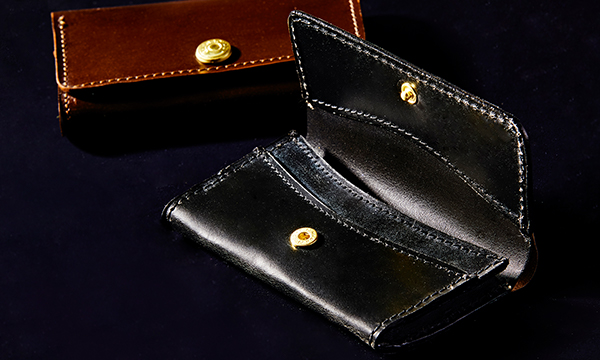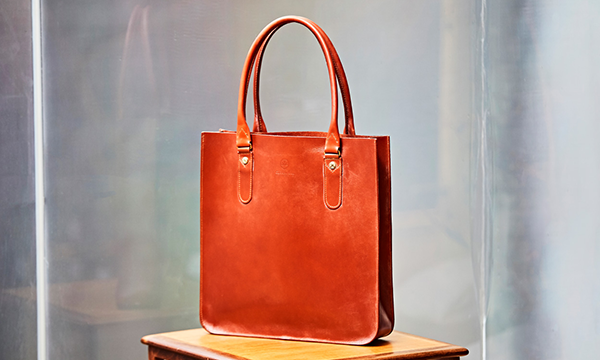ITEM 001
Dulles Bag
A briefcase known for its triangular form when viewed from the side, an opening that opens 180° and metal fittings on the front. The term “Dulles bag” is a Japanese-English word said to have been coined from the bag carried by American Secretary of State John Foster Dulles during a visit to Japan in 1951. In the UK, such a bag is referred to as a top frame briefcase.
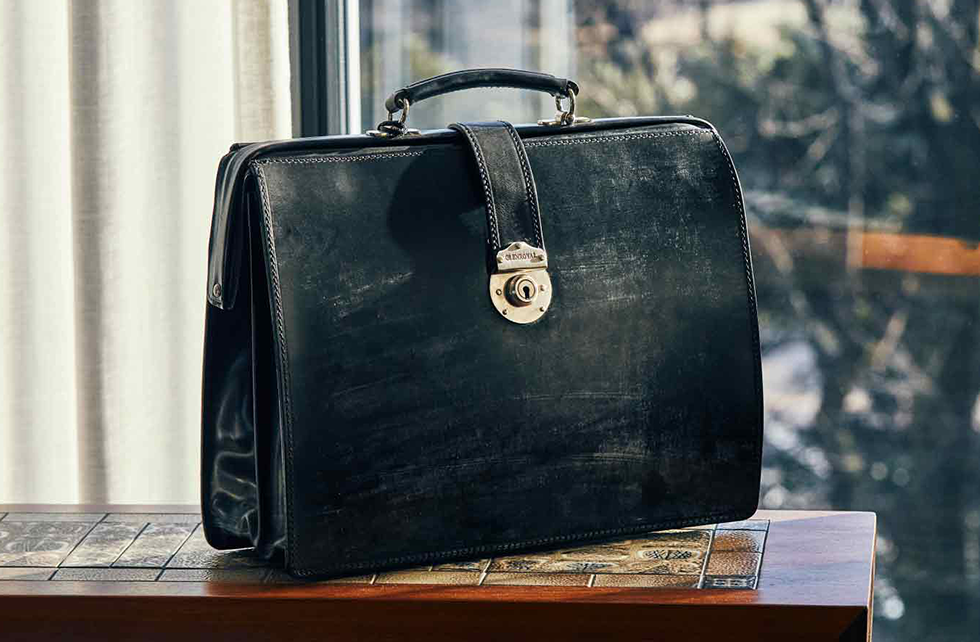
Carrying a Dulles bag enhances one’s persuasive power.
I think it would be great to see more of them in Japan.
“Batak” launched in 1994 as a pioneer of bespoke tailoring in Japan.
Company Head Hiroyoshi Nakadera, the head of the company is one of Japan’s leading “modelists” with an unabashed love for the traditional.
Here we speak with him about his workplace fashion as well as the Dulles bag that has been a favourite of his for so many years.
Batak Representative DirectorHiroyoshi Nakadera
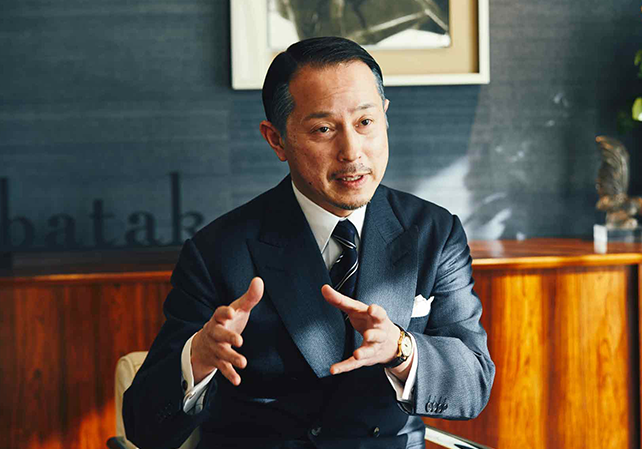
Will it suit my work style or not?
━Why are you so attracted to Dulles bags?
I’ve been using this one for over 10 years now, but the reason I first purchased it was quite simply that it could hold a lot of things (laughs). I did not consider this bag in terms of fashion, as I think it’s important to consider whether it will suit my work style or not from a functional perspective. It can carry many things while still retaining its shape, so it’s a perfect bag for those whose work requires them to carry lots of items. I am, of course, also conscious of my style and how I look while carrying it, so if I didn’t believe it matched my lifestyle I would have stopped using it. It’s very important to keep those fundamentals in mind.
I’d like to see more of them in Japan.
━How would you describe the status of the Dulles bag in Japan?
I think it would be great if more businessmen started using them. On the train, pretty much everyone has a nylon briefcase. This applies to suits as well, but if you do not go with something proper, then you are not going look like you know what you are about. In that sense, simply carrying a Dulles bag can completely change the impression you create. When thinking of this in business settings, it adds persuasive power to your words. I feel that businessmen in Japan today tend to steer clear of Dulles bags, but going about your business with a proper briefcase can also have a noticeable effect on your work. A great many of my clients are big fans of the Dulles bag.
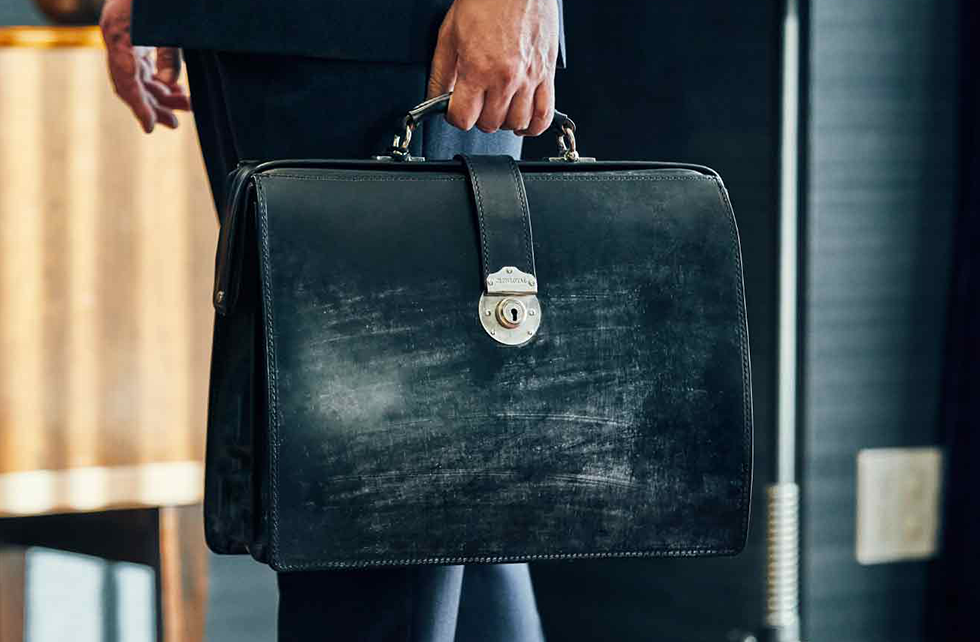
A size that suits Japan.
━What appeals to you most about Glenroyal Dulles bags?
When it comes down to it, the reason Dulles bags haven’t caught on in Japan is that they are large. They’re a normal size for people in the UK or Europe, but oftentimes your standard Dulles is a bit on the big side for use here. In that sense, I find Glenroyal’s Dulles bags to be of a perfect size and thus very easy to use. Another great thing about them is that they are made of bridle leather, precisely because they are meant for regular use over many years. The fun of bridle leather is enjoying how it transforms over time, so seeing a Glenroyal Dulles gain character as you use it is undeniably one of its appealing points. I love bridle leather, and have chosen to only use briefcases and attaché cases that are made from it. I would really like to see this Dulles bag more in business settings. I think it’s wonderful how I can use it as much as I want for work without any worries.

I want to be involved in every part of the creative process.
━How did go from being a patterner to a “modelist”?
The role of a patterner is to convert the ideas of the designer into a pattern. This means that I wasn’t really able to make things I came up with on my own. I gradually see these differences in presentation from the designers as a bit of a dilemma, and as a result arrived at the profession of the “modelist”. I come up with my own plan to make something, select the fabrics, and then put down the images in my head directly onto the pattern paper. I then convey everything, including the direction of the presentation, in great detail to the cutters and tailors. It’s my job to control all of these steps in the process and then deliver the finished suit to the client in the end. I got into this world because I love clothing, so my greatest motivation is giving shape to things I think are good and seeing how much responsibility I can take on, as well as how much people will recognise my efforts. The moment when one of my ideas is completed is extremely gratifying.
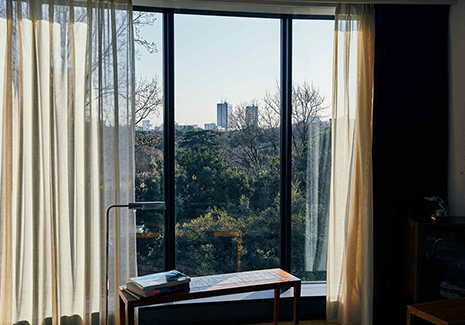
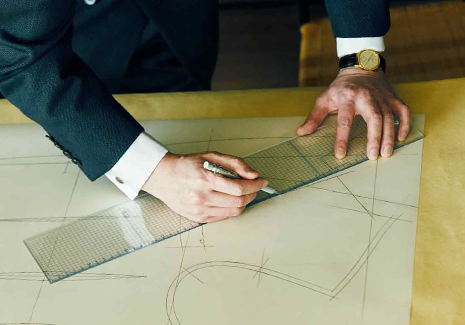
The role of a patterner is to convert the ideas of the designer into a pattern. This means that I wasn’t really able to make things I came up with on my own. I gradually see these differences in presentation from the designers as a bit of a dilemma, and as a result arrived at the profession of the “modelist”. I come up with my own plan to make something, select the fabrics, and then put down the images in my head directly onto the pattern paper.

I then convey everything, including the direction of the presentation, in great detail to the cutters and tailors. It’s my job to control all of these steps in the process and then deliver the finished suit to the client in the end. I got into this world because I love clothing, so my greatest motivation is giving shape to things I think are good and seeing how much responsibility I can take on, as well as how much people will recognise my efforts. The moment when one of my ideas is completed is extremely gratifying.

Good products are what remain without having to change values.
━What are your standards when choosing a product?
When we were younger, tailors didn’t really take centre stage. In the midst of the so-called “DC boom” (designer and character brand boom), only I didn’t find that sort of designer clothing to be of much interest. If anything, I was more into trad styles, and often wore vintage apparel from 1930-40s UK. I guess another thing is that the apparel from that era made a lot of sense to me since I was young. Now I’m not as particular when it comes to what era is good, namely because, even amongst older items, there are still plenty of duds. It’s the good things from among these vintage items that managed to survive on today without getting cast to the wayside. This is why I prefer products that match my lifestyle and can be enjoyed over many years of use. I’m not particularly interested in items that don’t change as time passes.
It’s important to make decisions based on my own sense.
━What is the appeal of made-in-the-UK products to you?
I like products made in the UK because they are timeless, sincere and can be used for a long time. Truth be told, it’s not that I’m particularly fond of things from the UK. If I had to put it a certain way, it’s more that there are many things I like in the UK. There are things I like in France and America, too, of course. My profession involves making suits, the roots of which are in Britain. I think it’s important to adopt a textbook approach for the base, and then use my own sense when deciding how to cook up the rest. For instance, even when I go shopping I do not bring along with me any preconception. In general, I try to make decisions on whether I like something or not by viewing it from a neutral state, rather than going with what I have been told.

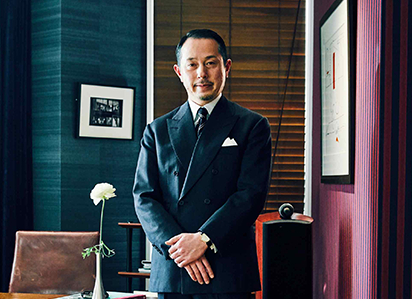
Batak Representative Director
Mr. Hiroyoshi Nakadera

Batak Representative Director
Mr. Hiroyoshi Nakadera
Upon completing studies in the fundamentals and actual practices of pattern-making and bespoke tailoring, Mr. Nakadera established his own firm, Nobel Note, in 1994. He opened the bespoke tailor company “batak” in 1999 in Daikanyama. This would expand in 2003 with the ready-made and made-to-measure brand “batak House Cut” at locations like Isetan and Hankyu. Currently there is a batak in Hibiya, and batak House Cut locations in Shinjuku, Osaka, and Fukuoka. Mr. Nakadera himself tends the shop at batak NAKADERA on the sixth floor of their Shinjuku location, spending his days tailoring bespoke suits.
photo TRYOUT
text K-suke Matsuda

